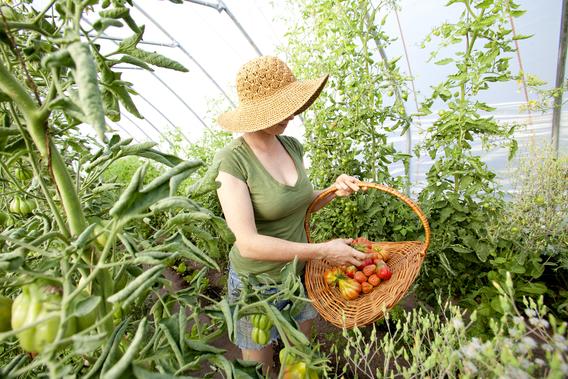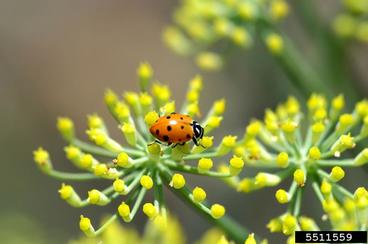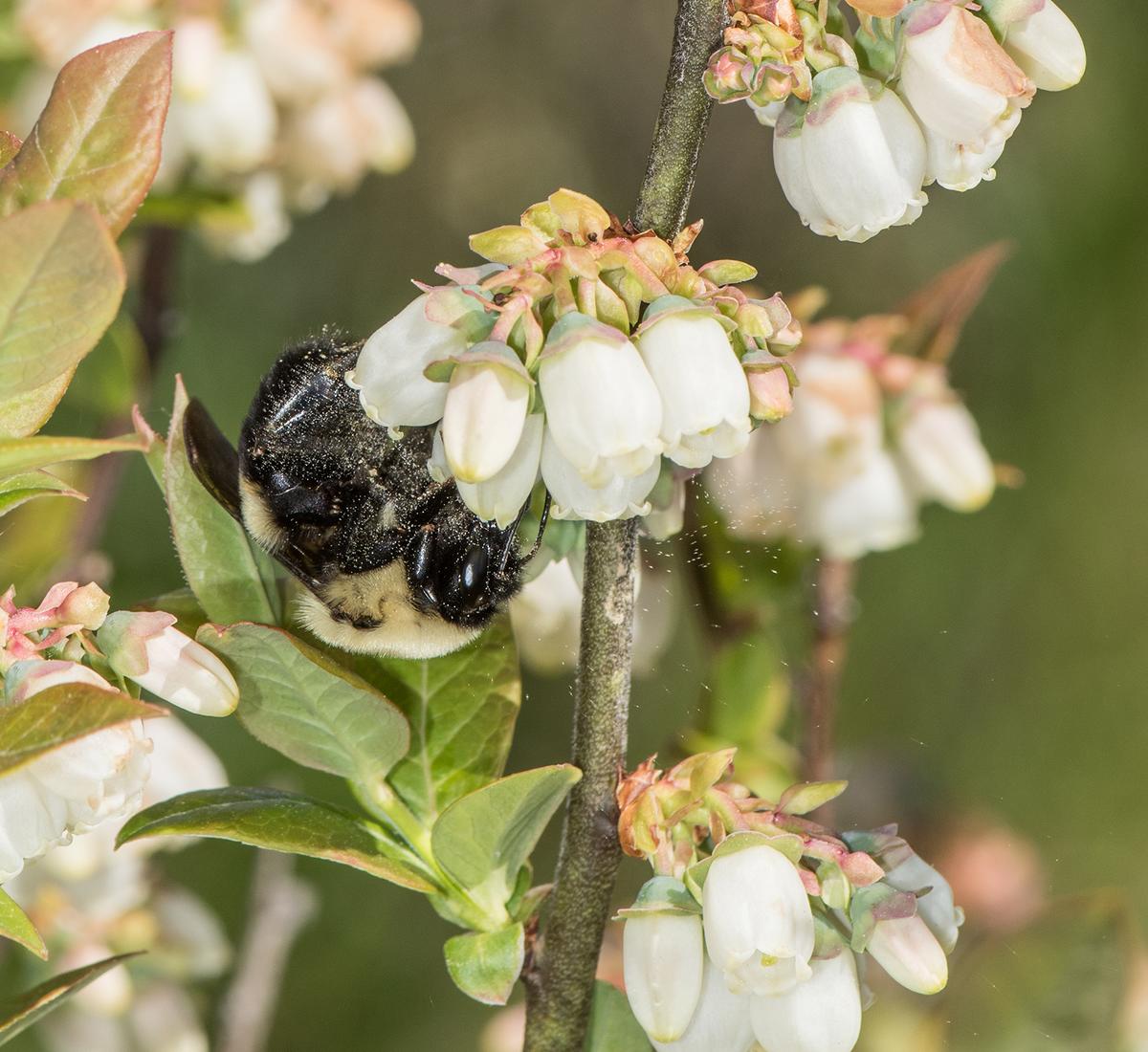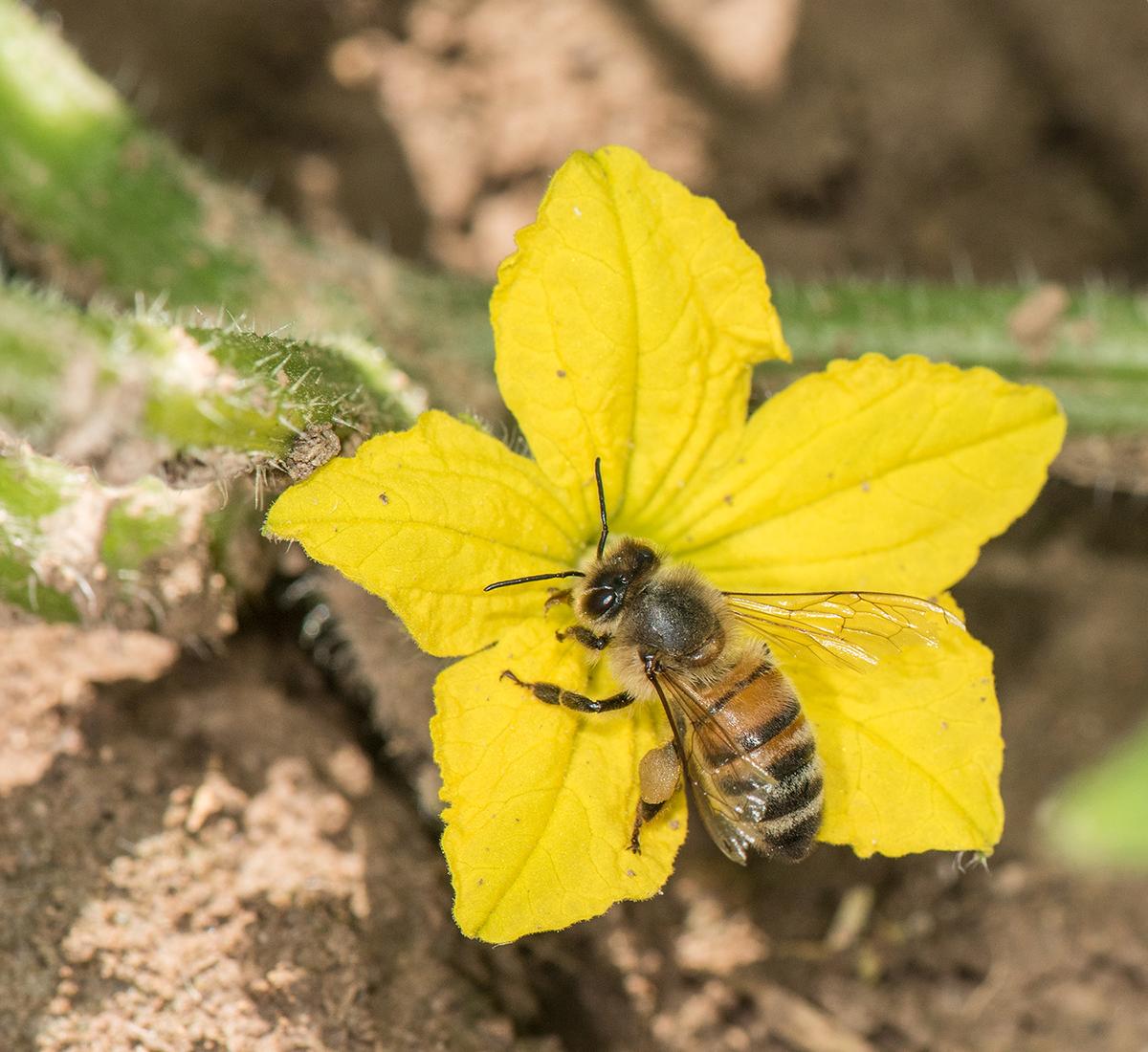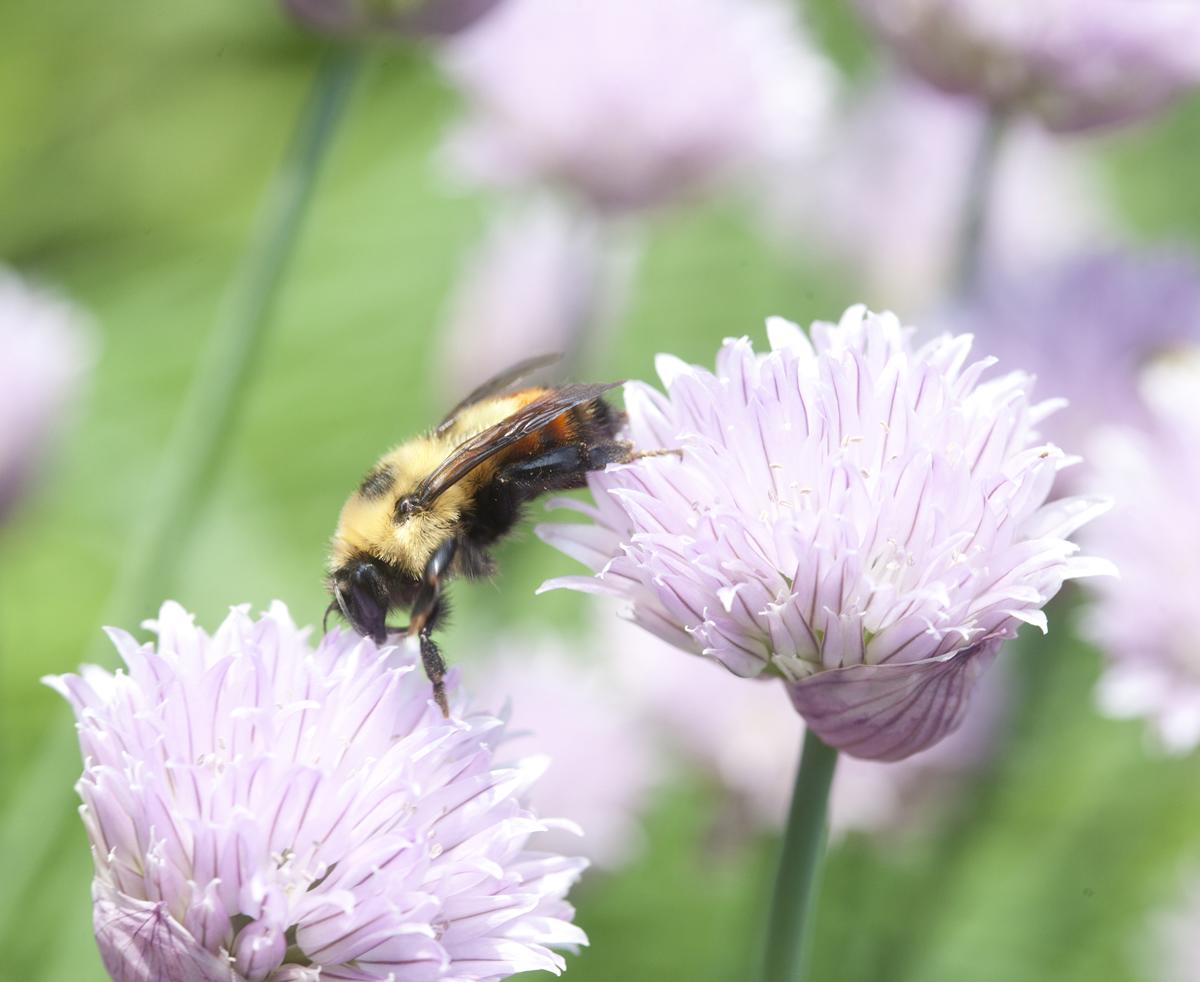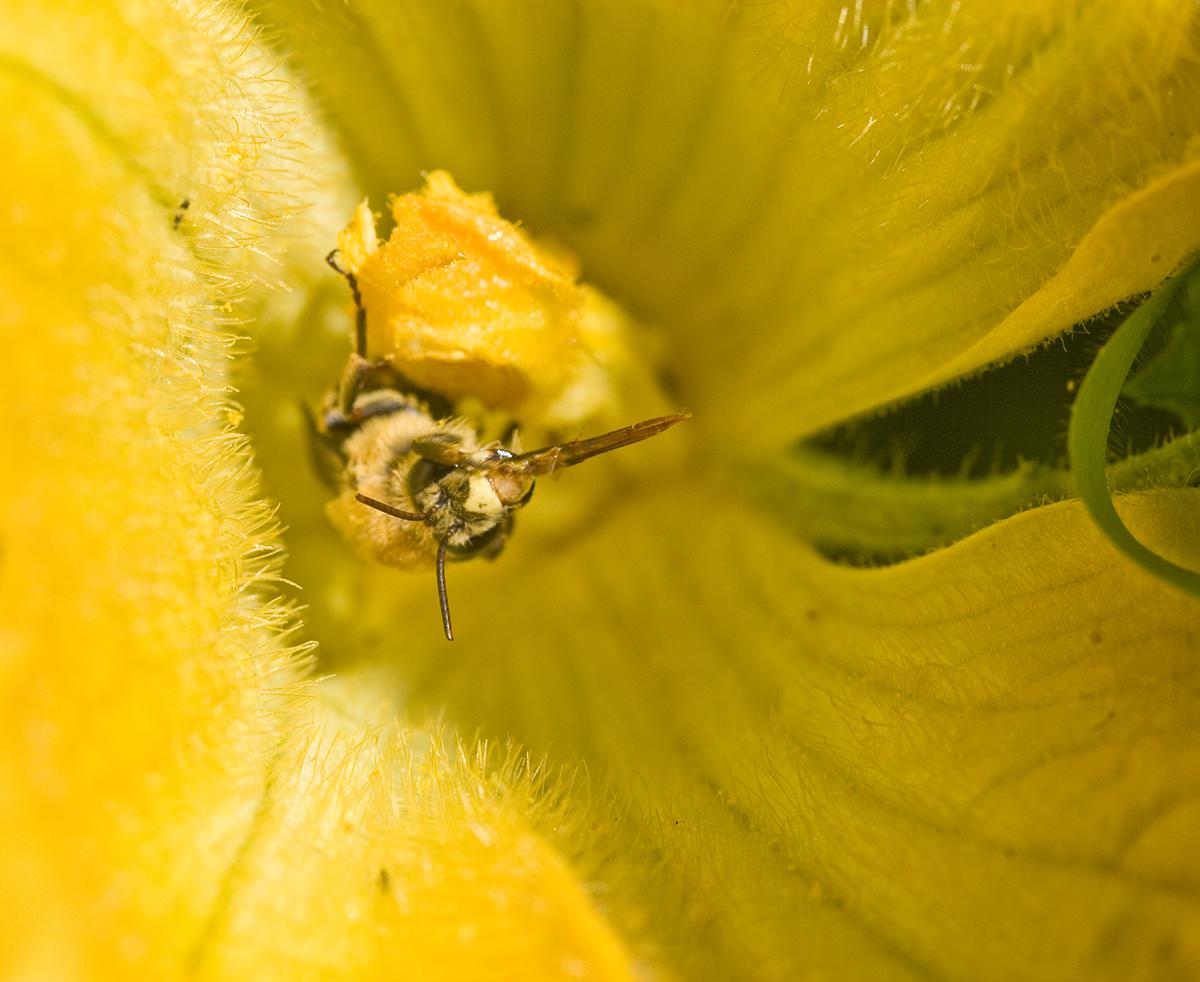Vegetable gardening can be a part of every backyard and community space. Our ancestoral homesteads were complete with orchards, berry producing bushes and vegetable crops. Before pesticides, gardeners were well versed in using beneficial insects, soil health, hedgerows, beetle banks, biodiversity and composting to ensure a bountiful harvest.
Principles of Vegetable Garden Best Management Practices
- Conserve biodiversity. A naturally diverse garden discourages outbreaks of disease or insects, and also attracts beneficial insects such as lacewings and lady beetles that prey on unwanted pests. Healthy soil supports plant health and resistance to disease.
- Protect soil from erosion. Use mulch to hold soil back near the plants.
- Promote nutrient recycling through composting and soil health. Composting is an ecologically sound way of disposing of garden and food wastes and is used to increase soil nutrients.
- Use integrated pest management (IPM) to control insects and diseases:
- When choosing plants, pick naturally resistant plants.
- Inspect and monitor your plants' health on a regular basis, before problems are out of control.
- Instead of routinely spraying for insects, spot treat problems with soft pesticides such as insecticidal soaps, oils, and biorational products such as spinosad.
- Adopt biorational practices that use naturally occurring biological control agents, such as parasitoids and predatory insects.
- Use safer weed controls. Hand weeding, spot treatments, and soil solarization.
Steps to Implementing Best Management Practices
photo: Laurie Schneider
You'll need a plan whether it's starting a new or expanding your fruit and vegetable gardens.
- Start a list - what do you and your garden friends like to eat?
- Plan your garden with flowers, veggies, herbs and fruit intermixed. Rotate what you plant each year. Within plant families also. For instance, don't put a nightshade where you had one last year.
- Choose a site that gets at least 6 hours of direct sunlight per day.
- Before you plant, know your soil. What it is and what it needs. Ideal soil for most veggie plants is loose, deep and crumbly with good drainage and plenty of nutrients and organic matter. Also know your area (sun, wind, rain variables).
- Buy only from trusted seed suppliers. Get seeds with a good history of germination that are open pollinated for seed saving and not treated/coated with pesticides.
- Start a compost system with veggie and yard waste to recycle nutrient rich material for the veggie garden. Use the compost to improve soil structure.
- Keep a detailed garden journal. Keep notes on weather, fruiting times, disease, what does well and not, and when pests visit. Include a map in your journal.
-
Manage insect pests using integrated pest management (IPM). Plants should be scouted (looked at) for pests several times a week. Physically block insect pests like flea beetles on cabbage by using floating row covers. Tolerate minor insect and plant damage and pick off and dispose of pests by hand. For instance, throw potato beetles or tomato hornworms into a pail of soapy water until they suffocate.Instead of routinely spraying for insects, spot treat problems with soft pesticides such as insecticidal soaps, oils, and biorational products such as spinosad.
A convergent lady beetle (Hippodamia convergens) is a voracious predator of aphids. photo: Bugguide -
Predatory and beneficial insects help control common garden pests by feeding on them or feeding them to their young. Many of the insects you encounter in the garden are benign or beneficial. The following beneficial insects are capable of consuming thousands of pests every day: lady beetles (ladybugs), lacewings, stinkbugs, soldier beetles, tachnid flies, parasitic wasps, pirate bugs, ground beetles and others. Lady beetles are notorious pest eaters, each consuming dozens of pest insects and insect eggs every day.
-
-
Control weeds with mulches, hand-pulling, hoes or other garden tools.Use newspaper, cardboard, leaf litter or rotted unsprayed hay for mulch. Blueberries do well with pine needles.
- Provide host plants for larvae and nectar sources for adults.
- Season-long shelter: Leave some sandy open areas for ground nesting bees to burrow down to nest, and muddy spots encourages butterfly puddling for minerals. Brush, leaf and mulch piles, logs, and overgrown areas provide safe places to overwinter or hibernate. Wait until late spring (May) to clean backyard gardens for hibernating bees. Pollinators overwinter in leaf litter, mulch piles, old wood and stiff plant stems. Native bees hunker down under peeling tree bark, or burrow in the ground, mulch or leaf piles. Chrysalis for swallowtail butterflies hang from dead plant stems or tuck away in a seed pod or under leaf litter.
-
Birds and wildlife such as chickadees, wrens and bluebirds are insect eaters. They consume thousands of caterpillars and pest insects to raise their young. Leaving the garden up means there will be more protein-rich insects for birds. Birds are experts at finding "overwintering" insects in plant stems, under bark and in leaf litter. The more nurturing-habitat you have, the bigger bird population. Honey bee hives can be placed near the garden for pollination services, and native bee houses on trees or stands near or in the garden. Include seed heavy plants, berry producing shrubs and fruit trees for song birds such as: viburnum, serviceberry, blueberry, highbush cranberry, chokeberry, elderberry, hawthorn, crabapple, plum, pear, and apple.
